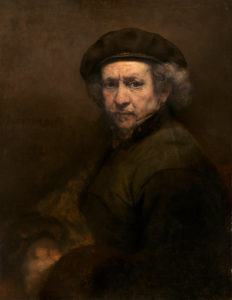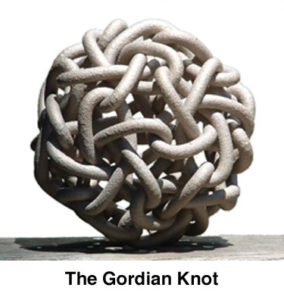Editor’s Note: In the Fourth Way today, how do we untie the Gordian knot of sleep? How can lower centers convey messages from higher states? And what role does objective art or music play in awakening?
Objective Art, Beauty and the King of Hearts
How does an artist use the various lower centers—instinctive, moving, emotional and intellectual—to find a form in which to elevate our spirits? In Ouspensky’s In Search of the Miraculous, he writes:
One of the most central of the ideas of objective knowledge, said G., is the idea of the unity of everything, of unity in diversity. …Realizing the imperfection and weakness of ordinary language, the people who have possessed objective knowledge have tried to express the idea of unity in ‘myths’, in ‘symbols’ and in particular ‘verbal formulas’ (e.g.) “As above, so below… and “Know Thyself”…The study of the world and the study of man will assist one another…In this sense, every symbol tells us about ourselves.
Gurdjieff states that the full meaning of objective art cannot be understood by lower centers. A higher level of being is required to understand a higher level of art. This means a higher understanding is a development of one’s being. The higher we go, the more connections can be made between “above” and “below.” The more one knows oneself, the more one can distinguish one’s mechanicality from one’s inner work. Perhaps, to transmit a higher state through art or music, one must become a better “receiver” of the state. Truly we can become more purely able to transmit a state through lower centers, whether through art or simple presence.
Objective Reminders of Higher Worlds
Some beings have achieved objective consciousness and left us glorious reminders to stimulate our higher states. In the music of Bach, we hear the music of the spheres reflected in that of the human heart: Bach’s music on Youtube. As above, so below.
In the self-portraits of Rembrandt:

Rembrandt van Rijn (Dutch, 1606 – 1669), Self-Portrait, 1659, oil on canvas, Andrew W. Mellon Collection
Also in the works of Shakespeare:
Then the conceit of this inconstant stay
Sets you most rich in youth before my sight,
Where wasteful Time debateth with Decay,
To change your day of youth to sullied night;
And all in war with Time for love of you,
As he takes from you, I engraft you new.
In such works echoes the constant refrain: Know thyself.
Solving the Gordian Knot

[[https://en.wikipedia.org/wiki/Gordian_Knot]]
According to myth, Alexander the Great removed the two ends of the Gordian knot from the pole to which they were attached, allowing him to untie the knot. We can take the knot as the labyrinth of our sleep: identifications, imagination, and negative emotions. The knot contains one invisible but golden thread—the desire to awaken, to know ourselves. This is Ariadne’s thread for escaping the cave of the Minotaur, and the beginning of our escape.
Objective art and music are traces of higher mind. Intentionally absorbing these impressions feeds our nascent higher centers. Intense beauty and music have the power to help us stop thoughts and perceive higher states. These energies help lead us out of the labyrinth, into a new light. Reality calls us to be present.
